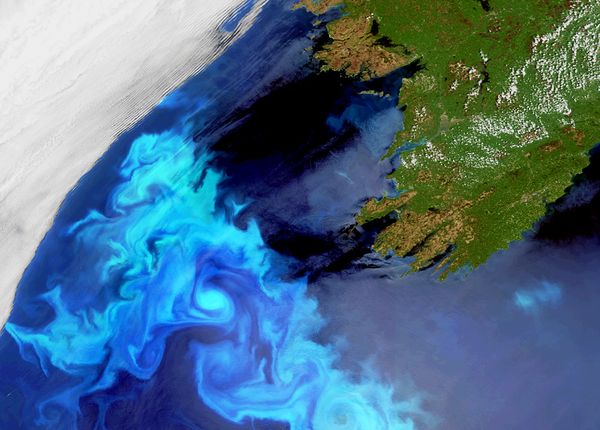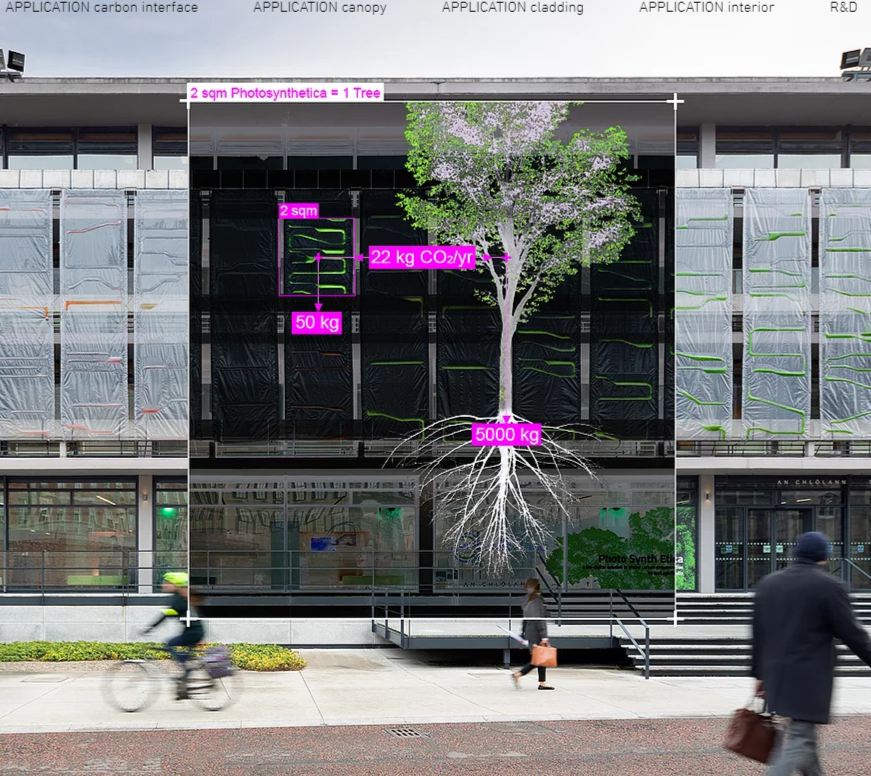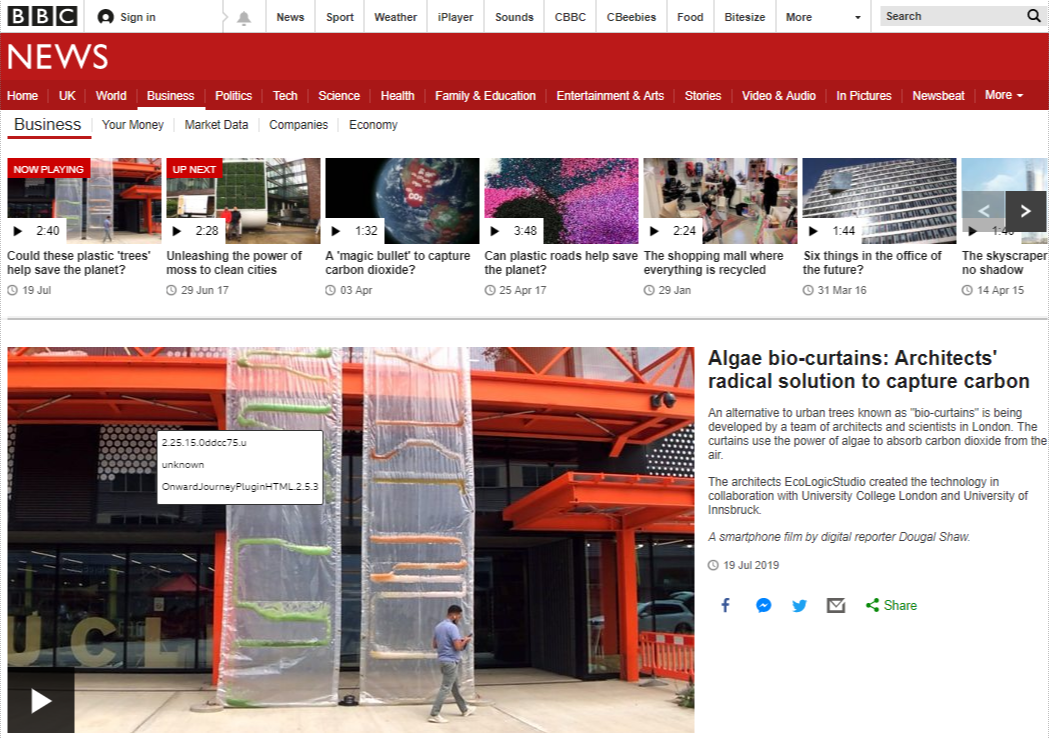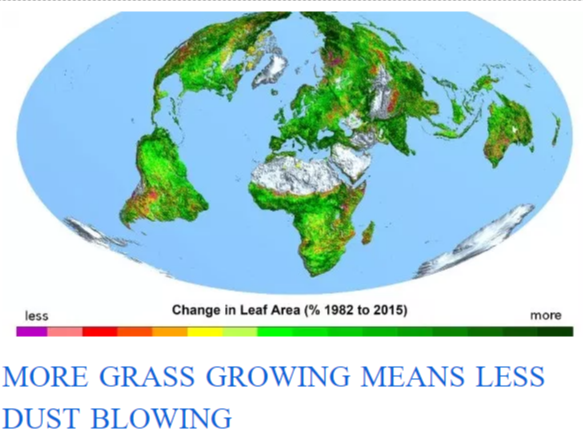
Urban Micro-Algae Pastures Prove Blooming Power Of Mother Nature
Algae Bio-Curtains: Architects’ Solution To Capture Carbon
An alternative to urban trees known as “bio-curtains” is being developed by a team of architects and scientists in London and Austria.
The curtains use the incredible power of micro-algae to absorb carbon dioxide from the air.
These algae, phytoplankton, building facades, are a micro-analog to biggest blooms of all, ocean pastures

The beauty of this massive natural plankton reveals the scale and inspiration of Mother Nature’s best works. Click to read more
The architects at EcoLogicStudio, taking a lesson from Mother Nature, have created the micro-algae technology in collaboration with University College London and the University of Innsbruck. Being architects their duty is to not merely design beautiful form into human habitation but also to make sure that what they design has function as well, and that means making sure the mathematics of their design works. The foundation of their design is the power of plankton.
How it works.
Micro-algae, aka phytoplankton, corralled in tiny plastic prisons and hung from the side of urban buildings can help save the climate as this BBC video shows. Imagine how the wild phytoplankton might be helped in their natural environment, their ocean pastures.
A patch the size of a city block of natural ocean pastures, helped by a simple gift of a hand-full of mineral dust to replenish their historic health and abundance, might suffice to clean an entire city. An area the size of the city of London’s might clean and sustain all of Great Britain.
Oh yes, don’t forget the ocean pastures sustain all of ocean life, and bringing them back to health will bring back the fish. So no more worrying about the local chippy running out of fish, as this news story describes… North Sea cod on brink of collapse July 2019 – Geographical Magazine.
Back to London.
The EcoLogicStudio architects explain that in their micro-algae curtains unfiltered urban air is introduced at the bottom of the facades. As the air bubbles naturally rise through the watery medium within the cladding, they come into contact with wonderfully efficient algae, micro plants.
Their modules are engineered to maximize the solar exposure of the algal cultures. They also increase their surface contact with air molecules and particles.
CO2 and air pollutants are captured and consumed by the algae and with the power of the sun and photosynthesis enable the algae to grow to produce more of themselves.
Their growing biomass is easily harvested to be used in the production of bio-plastic raw material, biofuel, fertilizers and super-food. On top of all this freshly photosynthesized oxygen is released at the top of each facade unit of PhotoSynthetica into the urban microclimate or the building interior.

A tiny amount of blooming algae is as efficient as a mature tree in converting CO2 into new life. Click to enlarge
Given the well known immense power of plankton, according to the architectural math, only 2sq.meter of their micro-algae curtain absorbs the same amount of CO2 as a mature tree. This integrated bio-building approach enables urban production of nutritious, high energy and protein micro-algal food from the urban environment with no land being subtracted to forest and nature.
Will building owners decide that these flowing curtains add value to their properties both with beauty and the ability to contribute part of the solution to humanities blight on the climate? It may be up to you, the common public, to prove we want such solutions. Time is short, ‘life as we like it’ can’t wait for someone else to save the planet.
Extrapolation in Nature
Given the immense power of the micro-algae to repurpose CO2 into new algae, aka life, an important aspect of this architecture is in its microcosm proof of how working with Nature is our best hope. The ocean pastures, home to 90% of all photosynthesis on this blue planet are in terrible shape. Their productivity has been in decline for decades such that today perhaps they are only repurposing 50% of the CO2 they did a century ago.
What is killing off ocean pastures is the impact of industrial age CO2 that has been causing global greening. That greening one can see in more grass growing, especially in the drylands of this world. More grass growing is covering those dry lands. That ‘ground cover’ keeps the dust from blowing in the wind.
It is mineral dust in the wind that empowers ocean plants, algae, to efficiently perform photosynthesis. Without the iron minerals in windblown dust that we now deny the oceans means photosynthesis is in decline.










